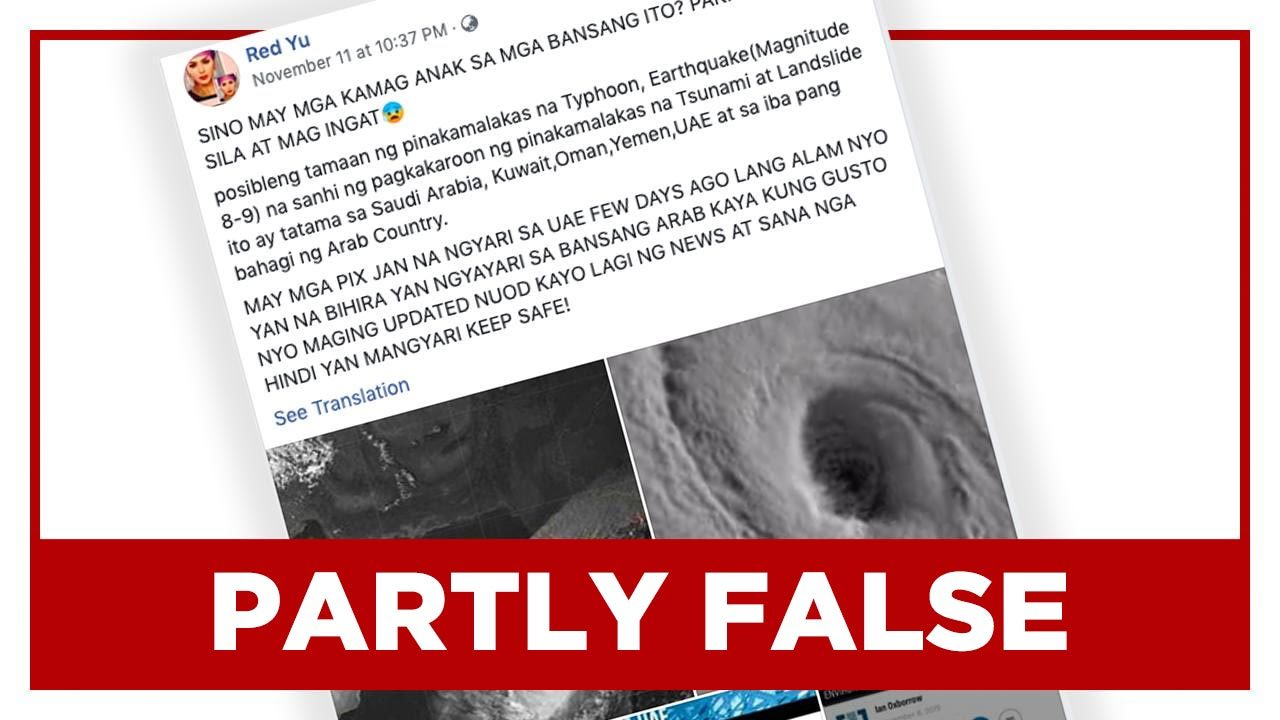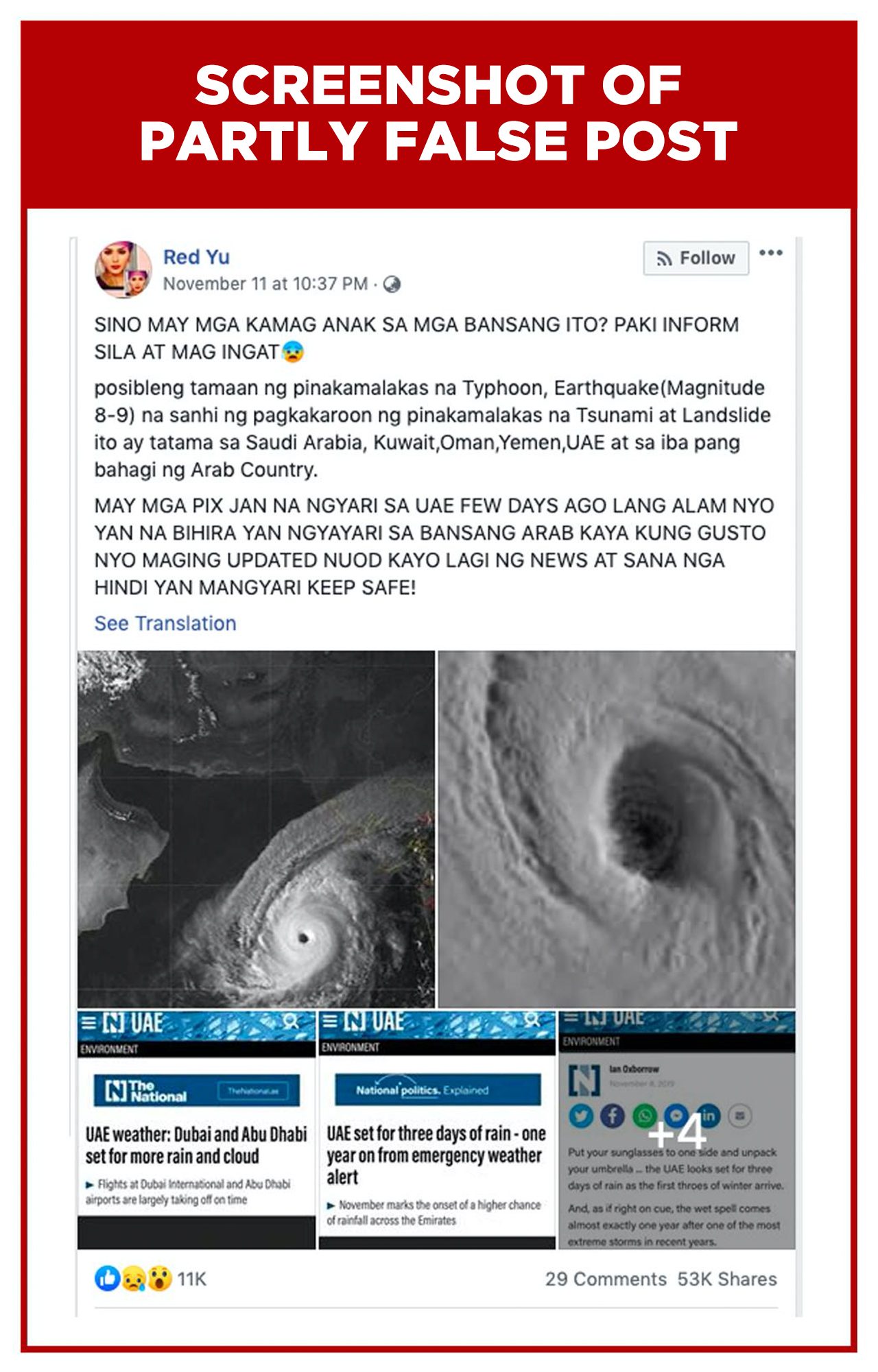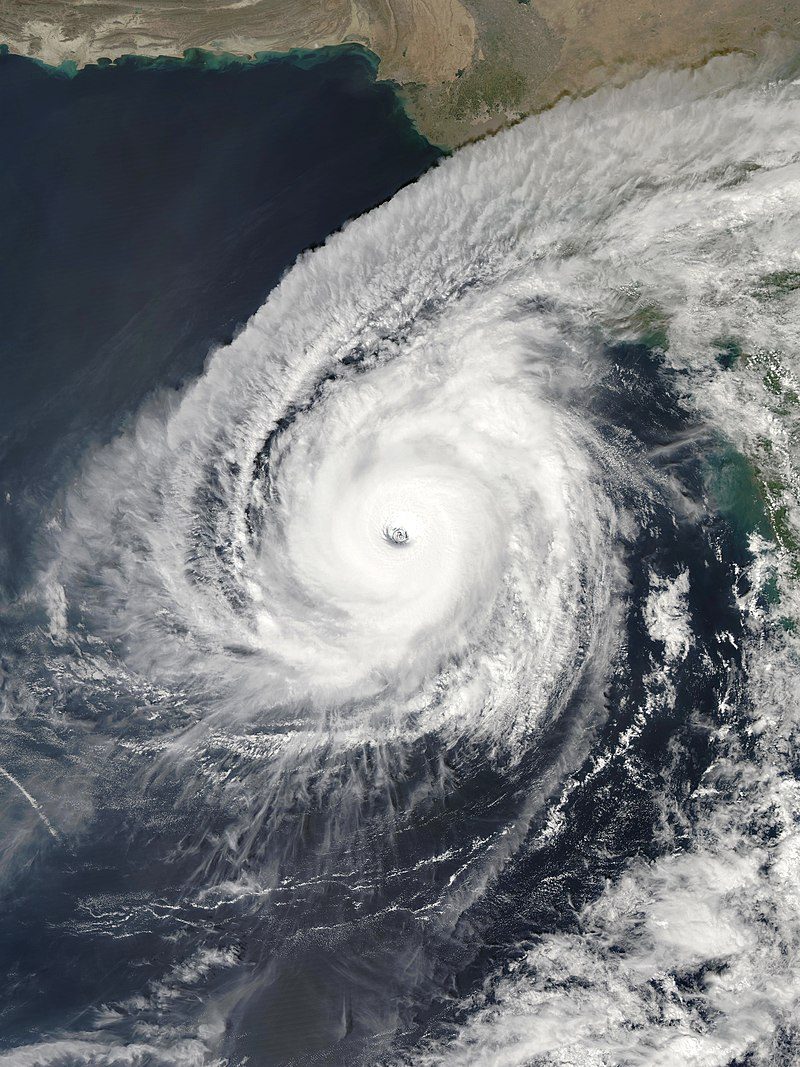SUMMARY
This is AI generated summarization, which may have errors. For context, always refer to the full article.

Claim: Facebook user Red Yu claimed in a post on November 11 that the strongest typhoon and earthquake are about to hit the Middle East. (READ: PAGASA warns parts of Luzon: Brace for Typhoon Kamm
Yu captioned the post, “Posibleng tamaan ng pinakamalakas na typhoon, earthquake (magnitude 8-9) na sanhi ng pagkakaroon ng pinakamalakas na tsunami at landslide. Ito ay tatama sa Saudi Arabia, Oman, Yemen, UAE, at sa iba pang bahagi ng Arab country.” (The strongest typhoon and earthquake [magnitude 8-9] will hit Saudi Arabia, Oman, Yemen, UAE, and other parts of the Arab triggering tsunami and landslide.)
She also said, “Sino may mga kamag-anak sa mga bansang ito? Paki-inform sila at mag-ingat. (Who has relatives in these countries? Please inform them to be careful.)”
The post also used several screenshots of news headlines, satellite imagery of typhoons, and photos of destroyed buildings as references.
The post is still being shared as of writing.

A slightly different version of the claim, which started circulating on October 30, said that the reason there were no news reports about the calamities was the desire to prevent panic.
Both claims went viral on Facebook accumulating combined engagements of nearly 100,000 shares, 25,000 reactions, and 370 comments, as of writing. The claims were flagged by Facebook Claim Check, Facebook’s tool for spotting online posts possibly carrying false information.
Rating: PARTLY FALSE
The facts: As of writing, there were no official advisories from the weather authorities in the Middle East announcing the “strongest” tropical typhoon or earthquake to hit the Gulf region. Earthquakes cannot be predicted, according to the United States Geological Survey.
The claim circulated after Tropical Cyclone Kyarr lashed coastal parts of Yemen and Oman and UAE’s east coast in the week of October 25. According to CNN reports dated October 29, Kyarr “reached the intensity of a Category 4 hurricane, becoming the strongest storm recorded in the [Arabian Sea] for 12 years.”
In a separate report by tribune.com.pk, the online site of Pakistan-based newspaper The Express Tribune, satellite imagery issued by the Pakistan Meteorological Department showed it “posed no major risk to any coastal areas of Pakistan.” The weather bureau tracked the movement of Kyarr in real-time and issued warnings posted on this page. The latest advisory was October 31.
Two weeks after the post, no reported tropical cyclone or earthquake hit Arab countries after Kyarr, based on a Google search filtered from November 12 to 28.
Using Google image search, Rappler found that the satellite imagery of the typhoon used in the post was Tropical Cyclone Kyarr.

The screenshots of news headlines used in the claim were indeed published by Middle East-based online newspaper The National.
The article in The National headlined, “UAE weather: Dubai and Abu Dhabi set for clouds and rain,” was published on November 18. The second report titled, “UAE set for three days of rain – one year on from emergency weather alert,” was posted November 18.
The articles only reported about the forecast of rainfall in Dubai and Abu Dhabi since November marks the onset of more frequent rain in the Emirates. The articles do not mention the strongest tropical cyclone or earthquake that could trigger a tsunami and landslides in any Middle East country.
The earthquakes that recently hit the Middle East were neither devastating nor recorded as the strongest: Oman felt a mild earthquake on November 4; the United Arab Emirates felt a magnitude 5.1 tremor that struck Iran in October 2019; a magnitude 5.9 earthquake that hit southwest Iran was felt in Kuwait in July 2019; and a magnitude 6.2 earthquake struck Yemen in July 2018.
Typhoons and cyclones are different in terms of the location where the storms hit. If a storm formed in the Arabian Sea, it is called a cyclone. But if it is located in the Western North Pacific, it’s called a typhoon. – Glenda Marie Castro/Rappler.com
Add a comment
How does this make you feel?
There are no comments yet. Add your comment to start the conversation.